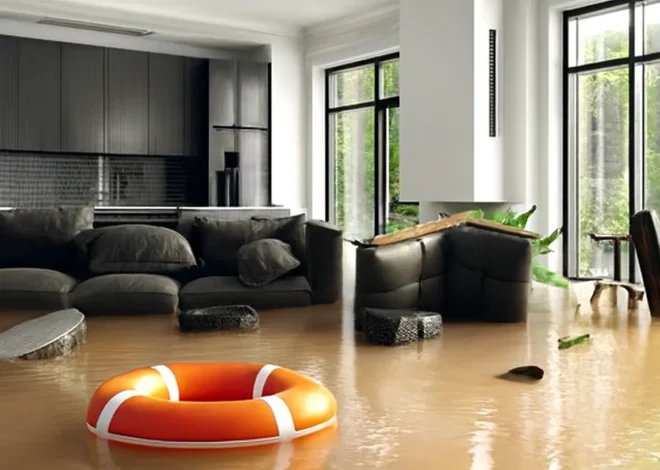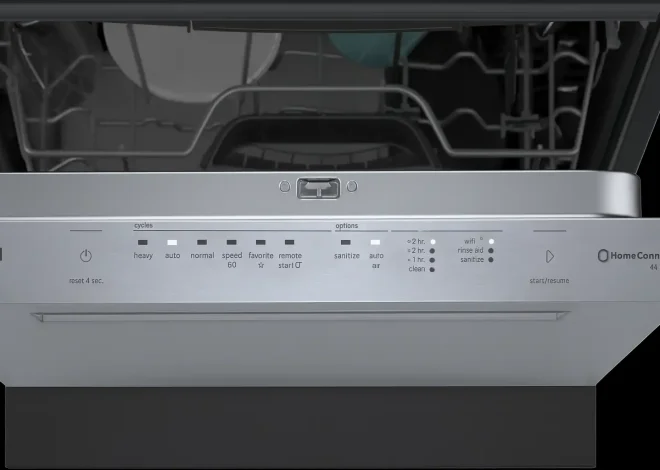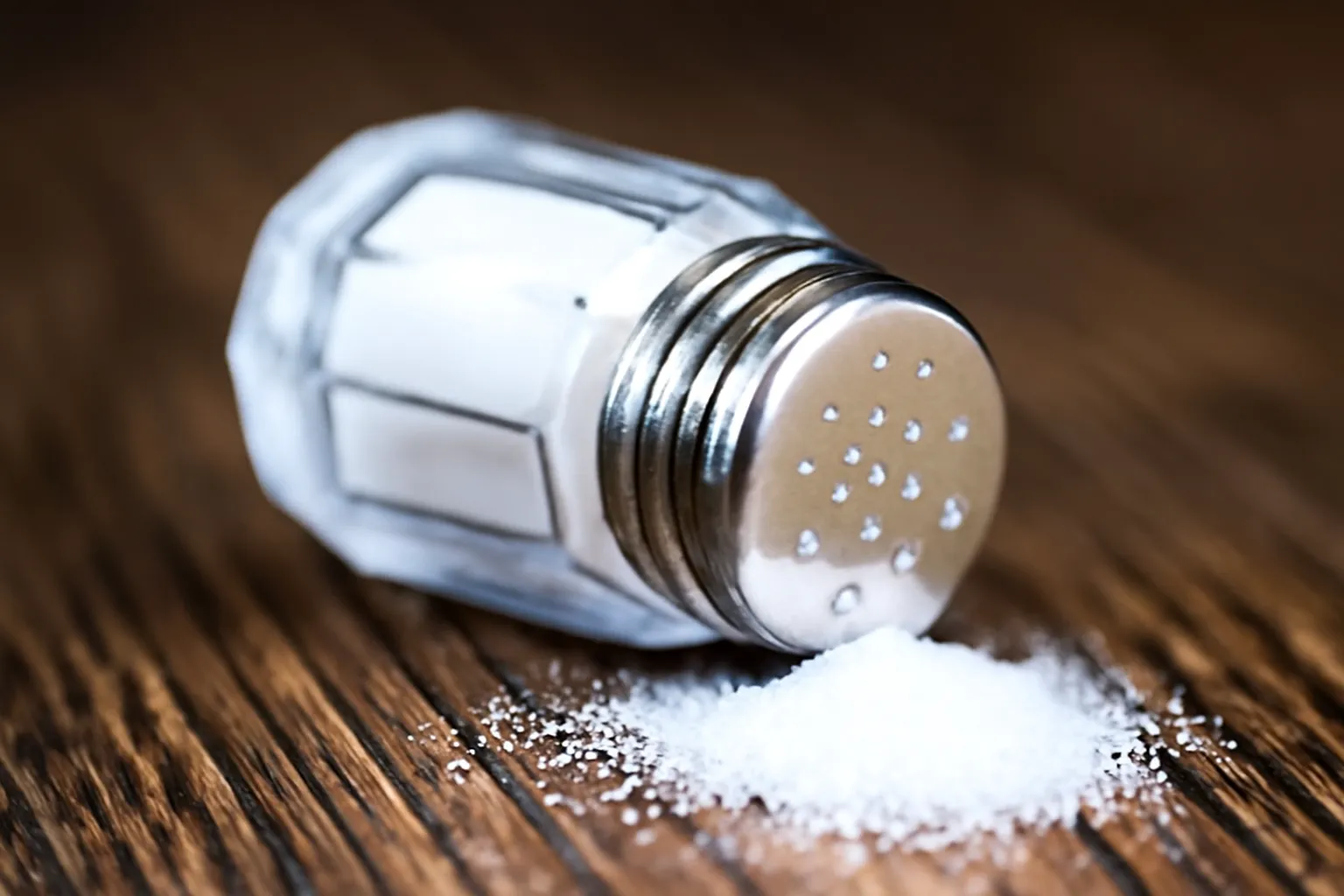
Does Iodized Salt Melt Ice? A Scientific Breakdown
From my own experiments during a snowy winter, I once grabbed regular table salt from my kitchen cabinet when I ran out of de-icer. I was skeptical, but to my surprise, it worked though not as quickly as the usual stuff. This personal test got me curious about the science: does iodized salt melt ice the same way other salts do?
Technically, yes. Any Salt for ice can be stored in a container to ensure its effectiveness during the winter season.Salt, including iodized, lowers the freezing point of ice to melt effectively. ice, which helps it melt. This process is called “freezing point depression.” The research behind it is straightforward: when salt melts ice, it breaks the bond between water molecules, turning solid into liquid.
Even though table salt is mostly sodium chloride with a bit of iodine added, the iodine doesn’t affect how Salt melts ice on roads; it still works, just maybe not as effectively as specialty de-icers. So next time you’re stuck in a freeze, don’t hesitate to test it out yourself. For more information and tips, visit Best Vouch.
Understanding Ice Melting: Does Iodized Salt Melt Ice?
Walking down my icy driveway one winter morning, I remembered wondering Have you ever considered how salt melts ice and contributes to safer de-icing surfaces? Salt works so effectively, especially when applied uniformly to de-icing surfaces.
It’s not magic, it’s science. When you sprinkle salt to make a brine, it can effectively lower the freezing point of water. salt on ice, something fascinating happens at the molecular level. Ice is a solid, with its molecules tightly packed together.
As soon as salt touches the ice, it dissolves in the thin layer of liquid water already present on the surface. This interaction creates ions, which mess with the molecules in the ice, lowering the freezing point of water.
This is why salt melts ice; it doesn’t generate heat, but it prevents the water from staying frozen at 0°C. The mix of salt and ice forms a briny solution, and that makes it harder for the solid Ice can stay solid even at temperatures above freezing Fahrenheit without the proper application of salt.
Growing up in a snowy region, I always saw my dad grab iodized salt for the steps, and now I get the chemistry behind it. Those ions To break free from ice, the way salt simply penetrates the surface is crucial for effective de-icing. dissolves into the tiniest bit of liquid, it’s all about shifting the natural balance of salt to make an effective melting solution for winter storms. molecules between the solid and liquid states.
What is the Science Behind Ice Melting?

Ever wonder how salt melts ice and helps maintain safe conditions on de-icing surfaces? why salt melts ice faster when you sprinkle it on your driveway in winter? Here’s what I’ve seen in real life: one winter morning, I noticed how just a bit of iodized salt spread over my walkway made the ice vanish quicker than areas without it.
This happened because of how salt interacts when it comes into contact with ice. It breaks the constituent structure of the ice, causing the tightly packed water molecules to pull apart, and that’s the real trick behind how salt melts ice.
When salt is added, it lowers the freezing point, allowing ice to stay solid at temperatures below freezing Fahrenheit turning point of ice into water, what scientists call the freezing point.
That’s why it works even when the temperature is below freezing. This salt melting ice reaction doesn’t rely on heat; it works chemically. That’s how even a cold day can feel a little safer under your shoes, thanks to the science at play in your pantry.
How Does Salt Affect the Freezing Point of Water?
Walking to work last winter, I noticed that some sidewalks were clear even though it had snowed all night. Others were still icy and slippery. Curious, I did a bit of digging and soon realized why salt helps melt ice. It’s not magic, it’s science.
The trick lies in ions that are released when salt touches ice. These ions interfere with the way water molecules normally freeze. This lowers the freezing point, meaning the water has to reach even colder temperatures to turn into ice again.
So, how does salt help melt ice? Once the freezing point drops, the existing ice begins to turn back into water, even if it’s still below 0°C (32°F). That’s how salt helps melt ice effectively, especially on roads and driveways. I always keep a small bag of iodized salt in my car during winter.
It’s a simple fix backed by chemistry. The answer to whether salt melt ice is yes, and the process works best when you understand how temperatures, ions, and freezing point all come into play.
What Role Do Ions Play in Melting Ice?
Ever since I started dealing with icy driveways in winter, I’ve noticed how quickly they clear up when I sprinkle iodized salt. I used to wonder why this works so well, but with time (and a little reading), I realized it’s all about the ions.
When salt touches the ice, it dissolves into the thin layer of water that’s always present on ice even in freezing weather. This process releases ions, which are tiny charged particles. These ions Interfere with how road salt interacts with the ice. water molecules come together to form solid ice.
By disrupting this bond, the salt helps to melt ice because it lowers the freezing point of water. That’s why the ice starts turning into water even when the air is below freezing. It’s fascinating how something as simple as iodized salt can make winter a bit more manageable, just by letting ions do their thing.
Iodized Salt vs. Regular Salt: Are There Differences in Melting Ice?
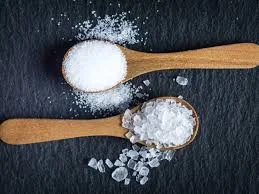
Last winter, I used table salt from my kitchen instead of rock salt to melt ice on my porch, I prefer using a little salt mixed with brine for better results. That made me wonder about the difference between iodized salt vs road salt when it comes to melting ice.
Both types of salt are made of sodium chloride, so yes, regular salt can melt ice. Even though iodized salt has added iodine, it still works the same way by lowering the freezing point of water.
If you’re thinking, does regular salt melt ice as well as rock salt, the answer is yes, but not as fast. Table salt (NaCl) is a common impurity that aids in melting ice., including iodized salt, has smaller grains, so it doesn’t spread as well. Still, if you run out of rock salt, it’s It’s worth considering the use of road salt for better results. using what you have. From my experience, for small areas, kitchen salt works fine. For bigger areas, rock salt is better.
What is Iodized Salt, and How is it Different from Table Salt?
Many people wonder if iodized salt can melt ice just like the coarser kind often seen on roads. From my own winter driveway battles, I’ve tried everything from rock salt to table salt, hoping to find a quicker way to clear the path. But here’s what I’ve learned through trial and research.
Iodized salt is basically table salt with added iodine, a nutrient important for health. It’s usually finer, dissolves fast, and comes in familiar carton packaging from brands like Morton. While it can melt ice in a pinch, it’s not as effective as the larger crystals of rock salt, which are made specifically for this purpose.
If you look at de-icing products sold for commercial use, you’ll find rock salt preferred because it covers more area and works better in cold conditions. So, while you could grab your kitchen Morton iodized salt, it’s not the most efficient choice for icy sidewalks.
Does the Iodine in Iodized Salt Impact Ice Melting?
When winter hits hard, many people wonder if the iodine in iodized salt impacts ice melting. As someone who has dealt with icy driveways in the Midwest for years, I’ve tried everything from rock salt to even kitchen ingredients. I’ve used Morton salt in a pinch, the kind you find on your dinner table, and noticed it can melt ice though not as quickly as specialized de-icers.
The trick is that regular table salt, even with iodine, lowers the freezing point of water, which is essential for understanding its solubility. However, the iodine itself added to prevent iodine deficiency in our diets doesn’t actually change how well the salt melts ice.
The actual ice-fighting power comes from the sodium chloride in the salt. So while Morton iodized salt does work, but it’s not the most effective at melting compared to other types of salt. iodine that’s doing the heavy lifting. That’s something I learned the hard way after wasting a few pounds during an icy morning rush.
Can Other Types of Salt Work Better Than Iodized Salt?
When I was younger, I saw my dad use kosher salt on our icy driveway when we didn’t have regular salt. That made me wonder, does kosher salt melt ice like the salt we use in the kitchen? It turns out that iodized salt does melt ice, but it’s not the best. The grains are small, so they melt too fast and don’t stay on the ice long enough to work well.
So, can kosher salt melt ice better? Yes! It has bigger grains, which means it stays on the ice longer and melts it better. The same thing goes for sea salt. It’s natural and less processed, and yes will sea salt melt ice? It sure will. But for really cold weather, there are even stronger options like calcium chloride, which works in freezing temperatures.
I’ve also seen products like Blue Heat used on city sidewalks. If you need a lot of it, buying in bulk Using road salt makes it cheaper and easier to manage ice on roads. From what I’ve seen, trying other salts besides iodized salt can make a big difference.
Practical Applications: When Should You Use Iodized Salt for Ice?
During a surprise A rain shower can be refreshing, but understanding how salt interacts with ice is essential for safe de-icing surfaces. last winter, I rushed outside to spread something on the slippery driveway before someone slipped. I didn’t have rock salt, but I had plenty of iodized table salt.
I wondered, can you use table salt to melt ice? From experience and a few quick checks in trusted labs often study the solubility of different salts in water to find the most effective ice melting solutions. and resources, I learned that yes, table salt will melt ice, although it’s not always the most efficient option.
If you’re dealing with a small area like a walkway or steps, using salt to melt ice even iodized table salt works in a pinch, especially when using finely ground sodium chloride (NaCl). It’s especially handy after a light rain shower freezes overnight.
In labs, tests show that iodized salt lowers the freezing point of water just like rock salt, but it’s best for limited use. So, when you’re out of the usual supplies and need a quick fix for the driveway, don’t hesitate grab that iodized salt shaker. Just be mindful it clumps easily and might not spread as smoothly as coarse salt.
Is Iodized Salt Effective for De-Icing Driveways and Sidewalks?

From years of clearing our walkway in icy winters, I’ve learned that table salt melts ice but not as quickly or efficiently as you might think. Many folks wonder how salt can be safely used in containers to prevent ice buildup during the winter season. does table salt melt snow too? The short answer is yes, but when it’s converted to slush, things get tricky.
Iodized salt, the kind in most kitchens, can help break up icy patches, especially in shallow fissures where water tends to refreeze. Still, it’s less effective in extremely low temperatures compared to rock salt or specialty de-icing products.
When I used iodized salt, it softened the top layer enough that I could easily grab my shovel and clear it off. The melted layer creates a thin slush, making it easier to manage but also slippery if left untouched.
So, is iodized salt effective for de-icing? It does the job in a pinch, especially when you’re out of stronger alternatives, but it works best in combination with regular shoveling and milder winter days.
Are There Health Considerations Iodized Salt for Ice?
As someone who’s often braved icy driveways in winter, I’ve seen many people reach for products they already have in their kitchens and that includes iodized salt. But a common question arises: is iodized salt safe to scatter on ice? While it does help melt ice similarly to table salt, there are a few things to think about.
When used in large amounts outside, the health considerations iodized salt raises aren’t about human consumption but about its environmental effect and how it might indirectly affect water supplies that support human health.
Even though you’re not eating it off the sidewalk, the type of table salt How you use salt matters greatly when it comes to its effectiveness on de-icing surfaces. Overusing products like iodized versions might not pose a direct health risk, but thinking about runoff and accumulation is smart. I’ve always told friends to use it in a pinch, but don’t treat your sidewalk like a baked potato.
What Are the Alternatives to Iodized Salt for Melting Ice?
As someone who’s dealt with harsh winters in the Midwest, I’ve learned that iodized salt can help melt ice, but it’s not always the best for melting ice. In freezing temperatures, I’ve found that certain alternatives to iodized salt work faster and are more effective on sidewalks and driveways.
One of the most common substitutes I use is rock salt. It’s rough, inexpensive, and works well down to about 20°F. But when it gets colder, I rely on Blue Heat, a premium ice melter that combines calcium chloride and other chemicals to cut through the thickest layers.
Each product has its place, but knowing when and where to use them can save time and effort. For extreme conditions, Blue Heat has never let me down especially when safety is a concern.
Environmental Impact: Is Using Iodized Salt Safe for the Ecosystem?
Growing up in a snowy town, I’ve often watched trucks spread iodized salt across the roads to melt the thick ice. While it works efficiently in breaking down slippery surfaces, I started wondering about the environmental impact iodized salt could have.
My curiosity led me to notice changes in nearby ice on roads. soil; it became drier, and plants struggled to grow back each spring. This made me question: Is salt safe for the environment, particularly when used in controlled amounts in containers to keep de-icing surfaces safe??
It turns out, while iodized salt helps keep roads safe, it doesn’t just stop at melting ice. It seeps into the water, travels through drainage systems, and eventually disrupts the ecosystem. Birds, aquatic life, and even small garden plots feel the effects.
Salt accumulation can alter soil composition and affect water quality, disturbing the natural balance. So next time I see salt spread, I think about the broader story of how one helpful act might silently change the ecosystem we all rely on.
What Are the Environmental Concerns of Using Salt for Ice Melting?
In my years living through tough winters, I’ve often relied on iodized salt to clear driveways. It’s cheap, easy to find, and it melts ice effectively. But I’ve noticed something: when spring comes, the edges of my lawn turn brown, and the plants near the walkway don’t thrive like they used to. This made me look deeper into the environmental concerns salt melting brings.
When Salt and the environment play crucial roles in de-icing surfaces during the winter season. interact, especially during heavy use in icy conditions, there’s a clear impact. Salt doesn’t just stay on the roads, it gets washed into nearby areas.
It can seep into the soil, making it harder for plants to absorb water and nutrients. Over time, this changes the soil structure, leading to long-term damage. Even worse, when it flows into drains and rivers, it affects water quality, harming fish and other wildlife. The convenience of salt comes with a cost that we often overlook until it’s too late.
How Does Iodized Salt Affect Soil and Water Quality?
From my own work managing landscapes in cold regions, I’ve seen how iodized salt and soil don’t always mix well. While iodized salt helps melt ice effectively on roads and sidewalks, it often ends up in nearby soil, changing its natural balance.
Plants in those areas struggle because the salt dries out their roots and affects how nutrients are absorbed. Over time, this harms the traction of the surface. quality of the soil, making it less fertile and harder to restore.
The runoff after snow melts also carries iodized salt and water quality into question. I’ve noticed streams near treated roads getting cloudy or foamy, which is a sign that the water has been altered. For more on this topic, check out this Reddit discussion on using regular table salt to melt ice.
Salt can affect the quality of drinking supplies and harm fish or other wildlife. As someone who’s had to manage both city parks and private gardens, I’ve seen firsthand how the long-term use of iodized salt creates a chain reaction that damages both water and soil and ultimately, the surrounding environment.
Are There Eco-Friendly Alternatives to Iodized Salt?

As someone who grew up in a snowy region, I’ve often reached for iodized salt to melt ice on my driveway. It works but not without consequences. Over time, I noticed the grass near the driveway turning brown and the concrete starting to crack. That’s when I began exploring eco-friendly alternatives to salt.
Switching to green deckers felt like a game-changer. These eco-friendly options, like beet juice mixtures or calcium magnesium acetate, don’t harm plants or pets. They’re not only alternatives to iodized salt but also safer for the environment and better for long-term property care.
While they might cost a bit more upfront, the damage they prevent during the winter season is worth it. Through trial and error, I’ve learned that choosing the right deicer can be both effective and kind to the planet.
Conclusion: Should You Use Iodized Salt for Melting Ice?
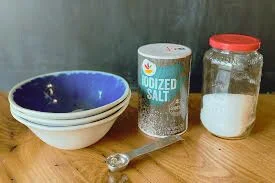
In my experience living through a few harsh winters, I’ve often faced the decision of how best to clear driveways and walkways using layers of ice and little salt. You might wonder, how much salt is also needed for effective melting? should you use iodized salt instead of regular rock salt or other de-icers? The short answer is yes, it can melt ice, though it’s not the most efficient option.
Table salt, which includes iodized salt, works by lowering the freezing point of water, creating a pathway for melting ice. This helps break the bond between layers of ice and the surface beneath. ice and the surface below. However, it’s less potent than specialized de-icing salts and not ideal for very cold temperatures, especially when using regular table salt.
What’s interesting is how to put salt effectively on driveways and walkways. salted ice behaves. When you scatter iodized salt over it, the salted ice begins to turn slushy at the top, especially when temperatures hover near freezing. But from a practical standpoint, unless you have large amounts of table salt lying around, using it might not be cost-effective for big areas.
I’ve found it helpful in smaller spots like porch steps or car windows when I run out of other options. So while iodized salt isn’t your go-to de-icer, it’s good to know it works in a pinch when you need to make a quick decision during winter. For a more effective solution, you might consider specialized products like the Blue Heat 50-lb Pellets available here, which offers a more efficient de-icing solution for harsh winter conditions.
What Are the Key Takeaways Iodized Salt Ice?
From my own time spent in colder regions, especially during harsh winters in the Midwest, I’ve seen how crucial road salt is when dealing with ice and snow on icy driveways. One might wonder if iodized salt works the same as regular rock salt for melting ice.
In short, it does help, but not because it’s iodized. The iodine added to table salt is meant for nutrition, not function. Still, if you’re in a pinch, iodized salt can slightly lower the freezing point of water, leading to some melting of the ice.
Here are the key takeaways from iodized salt ice: While it’s not the best option, iodized salt is still useful for melting small patches when traditional deckers aren’t around. The main reason it works is due to the salt itself, not the iodine. So in summary, it’s effective in theory but not ideal in practice. Based on personal experience, always keep dedicated ice melt on hand, but in emergencies, even your kitchen salt can help keep you from slipping.
How Can You Make an Informed Decision on Using Salt for Ice?
When I first moved to a colder place, I didn’t know much about how to use salt on ice. People gave me advice, but I wanted to check for myself. So, I did some small experiments on my driveway. I tried regular iodized salt and other kinds of ice-melting products. I saw that iodized salt did help melt the ice, but it worked better when the weather wasn’t too cold; much salt is needed for optimal results.
If you want to make informed decision salt choices, it’s a good idea to think of it like a little home project. Test different types of salt and see how they work in your area. Use your own experience and look at some commercial ice melting products. research to find the best solution for you.
What More Can Be Learned Through Further Research Salt Ice Melting?
Having worked in lab operations often utilize brine solutions for various experiments. During my early chemistry studies in a lab environment, I’ve seen firsthand how the properties of materials can penetrate and affect reactions. experiments with salt and ice bring more questions than answers.
While it’s clear that salt can lower the freezing point of water, making it effective in melting ice, the role of iodized salt isn’t always straightforward. Some say it’s less effective than rock salt, but we still don’t fully understand why. This gap shows why further research on salt ice melting could reveal the best methods for using it during a winter storm. is not just helpful, it’s necessary.
The science salt on ice isn’t as settled as people think. Controlled experiments In a lab environment, short-term effects of salt can be observed, but long-term field testing is essential for understanding its impact on de-icing surfaces during the winter season research are needed to understand how additives in iodized salt like iodine and anti-caking agents impact its performance on roads and sidewalks.
As someone who has analyzed these reactions up close, I believe that deeper dives into the effects of salt on ice and snow are necessary. lab operations behind these studies could unlock more efficient, environmentally friendly ways to manage ice in winter.
FAQs
What kind of salt can you use to melt ice?
Calcium chloride and magnesium chloride melt ice faster than rock salt and work in colder temperatures with less environmental impact.
What happens when you heat iodized salt?
Heating iodized salt causes iodine loss, which increases with temperature, peaking at 100 °C, but using lower temperatures can help preserve its iodine content.
What kind of salt can you use to melt ice?
Calcium chloride and magnesium chloride melt ice faster than rock salt and work in colder temperatures with less environmental impact.
What happens when you heat iodized salt?
Heating iodized salt causes iodine loss, which increases with temperature, peaking at 100 °C, but using lower temperatures can help preserve its iodine content.
